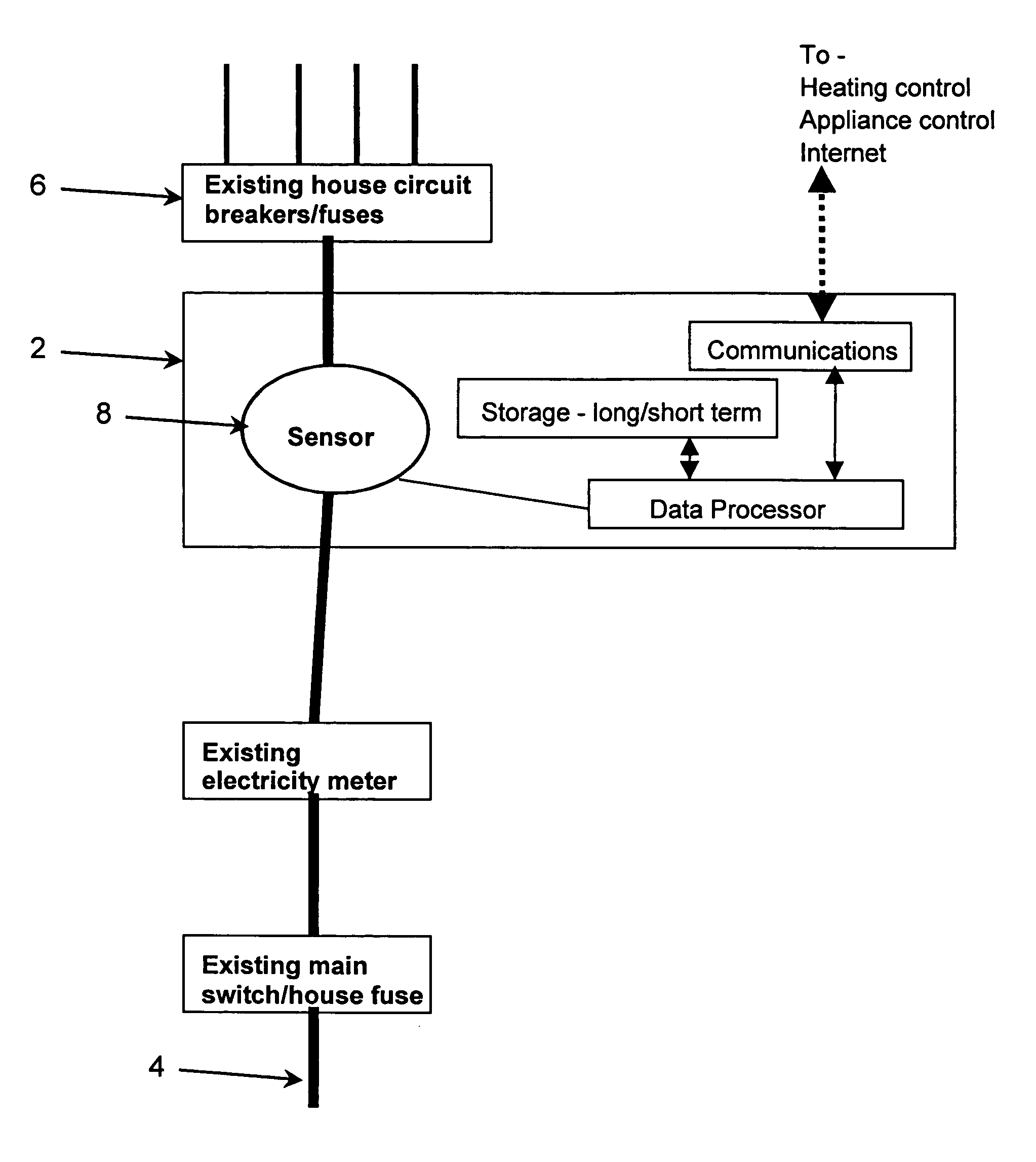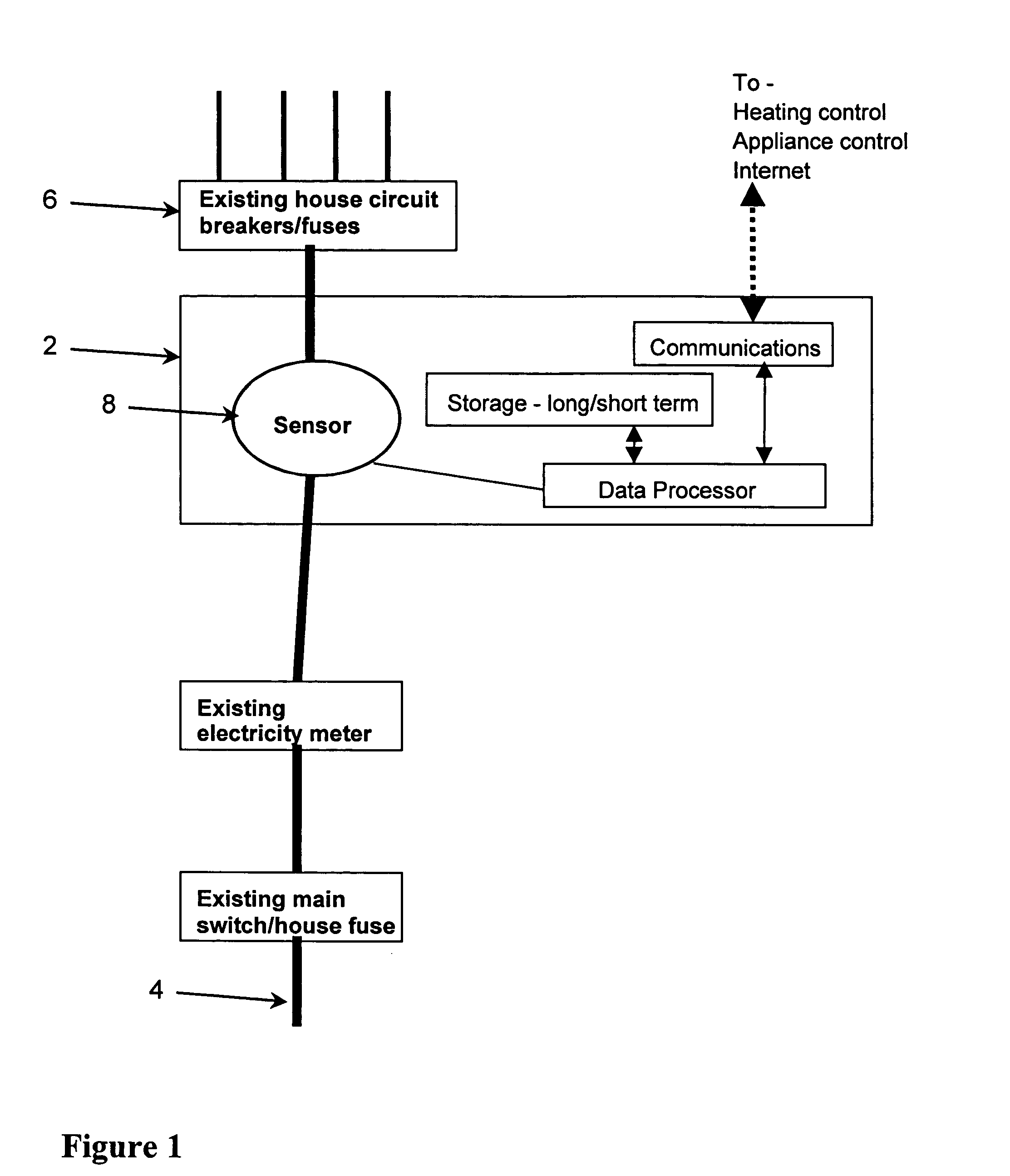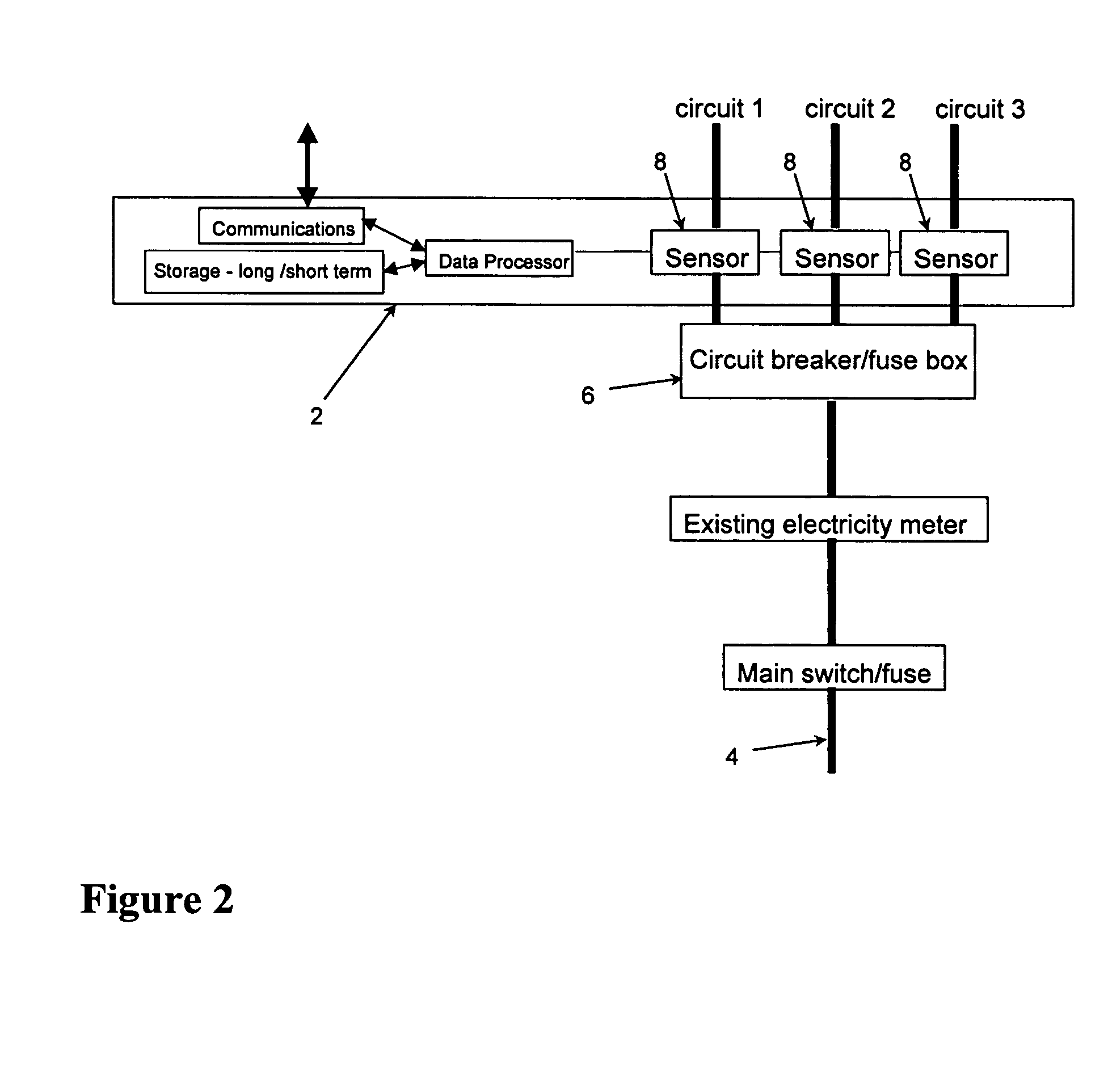Using energy-use sensors to model activity and location of building users
a technology of energy-use sensors and building users, applied in the field of household energy management, can solve the problems of excessive use of technology, large number of additional devices, complicated and costly hardware requirements for this system, etc., and achieve the effect of reducing energy costs for householders, increasing the background temperature of the house, and being cost-effectiv
- Summary
- Abstract
- Description
- Claims
- Application Information
AI Technical Summary
Benefits of technology
Problems solved by technology
Method used
Image
Examples
Embodiment Construction
A Typical System
[0047]Consider a system, which uses a single central sensor to monitor the flow of electricity into the house. It records / analyses the data in great detail—not only on a minute by minute basis but also the instant an appliance is turned on it analyses the starting current in detail over milliseconds. In this way it determines which appliance has been turned on and how long it has been on for and at what time of day it has been used. It builds mathematical models of:[0048]All appliances used in the house and their pattern of use[0049]The house's transient thermal behaviour under heating and cooling conditions
[0050]The system is intended not just to monitor the electrical system or the gas heating system but to link the monitoring of gas and electricity together to allow a whole system understanding to be achieved and provide better optimisation of the total energy use within the house. For example, sudden changes in electrical activity can indicate that the householde...
PUM
 Login to View More
Login to View More Abstract
Description
Claims
Application Information
 Login to View More
Login to View More - R&D
- Intellectual Property
- Life Sciences
- Materials
- Tech Scout
- Unparalleled Data Quality
- Higher Quality Content
- 60% Fewer Hallucinations
Browse by: Latest US Patents, China's latest patents, Technical Efficacy Thesaurus, Application Domain, Technology Topic, Popular Technical Reports.
© 2025 PatSnap. All rights reserved.Legal|Privacy policy|Modern Slavery Act Transparency Statement|Sitemap|About US| Contact US: help@patsnap.com



